Located on the Scandinavian Peninsula in Northern Europe, Norway spans 385,207 km² and had a population of 5.52 million as of 2023. Fjords stretch along the entire coastline—some of the most impressive extend over 100 km from the ocean inland! With more than 1,000 fjords, it’s a dream destination for landscape photography. In the west, you’ll find deep reaching fjords; in the center, the landscape shifts—still mountainous, but much more open. Unlike the Alps, where the peaks are closely packed, Norway’s central mountains have a spacious, expansive feel.
Norway is incredible for landscape photography, with its dramatic mountains, glaciers, and deep coastal fjords. It’s easy to mistake it for paradise!
How to Get to Norway
Getting there is simple, but not cheap!
If you're flying, you'll most likely arrive first in Oslo, at Oslo Airport Gardermoen, which is the main international gateway to Norway. From there, you can catch a connecting flight to your final destination—such as Lofoten or Senja—via regional airports like Harstad/Narvik (Evenes) or Bodø Airport.
The fastest way to get to the Lofoten Islands is to fly to Leknes or Svolvær via Bodø. However, a more economical and scenic option is to fly to Bodø, rent a car, and take the ferry to Moskenes. This gives you more flexibility, better sightseeing opportunities, and makes it easier to explore the islands once you're there—having a car in Lofoten is definitely a big advantage for scouting and exploring.
Another alternative is to fly into Sweden, rent a car there, and drive into Norway. Depending on where you're coming from, this can save you a lot of money, especially on flights and car rentals.
How Expensive is Norway
If it’s your first time in Norway you may notice it’s a bit more expensive here, that is partly due to high taxes, which fund the country’s strong welfare system (free healthcare, education, etc.). High costs are especially noticeable in grocery prices, due to high import taxes, so if it’s not locally sourced expect to pay more for it. Alcohol and tobacco taxes are also very high to discourage use. Other things that can be expensive is dining out, hotels and transportation. Transport is expensive because of the high price of gasoline and presence of toll roads. Here are some of the average costs you can expect to pay while traveling in Norway and ways you can make your trip cheaper.
Accommodation is the biggest cost by far but also the best place you can make your trip a lot cheaper. The price will vary depending on location but for a 2-3 star hotel you can expect to pay anywhere between US $100 and US $140 per night (double room), that’s just an average though and it varies a lot around the country and the season. I recommend staying in apartments, not only is it usually cheaper but you also have the added convenience of being able to cook your own food. Apartments can be around US$70 to US$120 per night. Peak season will see higher prices due to the demand. For example in The Lyngen Alps, which is a recommended area for photography, you can expect to pay a minimum of US$150 per night in July even booking a year in advance. However in Senja you can book an apartment for USD$60 – 100 if you book well in advance. Booking.com is the best way to do this.
Let’s talk about food—because this is another great way to save while traveling! Dining out in Norway can be surprisingly expensive. A simple meal at an average restaurant might set you back US$40–60, while dinner at a more upscale place can easily exceed US$80 per person—and that’s not including drinks or alcohol. Alcohol in Norway is shockingly expensive. A beer at a bar or restaurant can cost between USD$8 to USD$12, while a glass of wine can range from USD$9 to USD$13.
One of our best money-saving strategies when we are in Norway is to eat at home as much as possible. We always book accommodation with kitchens so we can cook breakfast and dinner at home and make a sandwich or buy some snacks for lunch. We take it to an extreme level though and also carry a gas burner with us so we always have the ability to travel easily and cook as we go. Many hotels will include breakfast in your accommodation price so that is an added benefit to be aware of.
Best Subjects to Shoot in Norway
There are many incredible subjects to shoot in Norway, and depending on where you base yourself and what transport you have available, you may even get to see them all! I recommend covering everything listed below when planning a scouting trip in Norway, and giving yourself 2–3 weeks to capture it all.
Given how expensive it is in Norway, it’s better to do everything in one trip rather than come back multiple times—especially considering how pricey airfares can be. It also takes time to cover the terrain; for example, getting from Senja and the Lofoten Islands all the way to the south, like Reine, can take hours. So definitely give yourself enough time to visit all the subjects and areas!
The Fjord Landscapes
Naturally, one of the most incredible sights in Norway is the fjords. To truly capture these majestic landscapes, go high above the water and shoot downward. This is the perspective you’ll often see in the work of other landscape photographers. From up high, the contours of the land become more visible. You won’t see sharp peaks, but you will see the layers of the terrain. That’s the strength of fjord landscapes — they rarely feature dramatic, pointy summits. The top contours are generally flatter, especially compared to the Alps or Dolomites. But that’s exactly what gives the fjords their unique beauty: the soft, layered depth of the landscape.
The Northern Lights
The Northern Lights are often photographed from sea level in the fjords. This is mainly because, when the lights appear, it’s usually more difficult — or even impossible — to hike up a mountain. Having a reflective surface like water or ice can really enhance your shots, adding an extra dimension to these already stunning, colorful displays. Of course, if conditions allow and you’re up for it, you can still head to higher ground to shoot the lights from above.
Waterfalls
Easily one of the best subjects to photograph in Norway are the countless incredible waterfalls. Few places in the world have as many waterfalls as Norway — thanks to the heavy rainfall, steep terrain, and the way water runs directly down the mountains and stays above the surface for longer. The steep drops and constant flow year round make them perfect foreground for your shots.
The Birch Trees
The trees here are quite different from those you’ll find in the Alps or Dolomites. Instead of dense coniferous forests, you'll see many birch trees — more open, with twisted trunks and delicate branches. These are part of what’s known as the Scandinavian montane birch forest zone, a unique ecosystem found in the highlands of Norway and parts of Sweden. The open structure of the birch woods allows more light through, creating a soft, airy feeling that’s perfect for landscape photography — especially when mist or snow adds atmosphere.
The Red Fisherman’s Cabins
Yes, I know — they’re not the typical subjects you’d expect to see in landscape photography. But the vibrant colors and unique style of Norway’s red fishermen's cabins create a striking contrast against the natural beauty of the landscape. More importantly, these cabins are an iconic part of Norway’s culture and identity. Capturing them in your photos adds a layer of authenticity, making your shot not only beautiful but also instantly recognizable as part of Norway’s charm.
Glaciers
Don’t miss your chance to capture the stunning glaciers of Norway while you still can. Norway is home to some of the largest glaciers in Europe. While photographing them can be more challenging than in the Swiss Alps — where the glaciers tend to look more organized (no surprise, it’s Switzerland!) — the raw, untamed beauty of Norway’s glaciers is unparalleled. One of the most impressive is the Jostedal Glacier, the largest in mainland Europe, stretching over 60 kilometers. Its jagged ice formations provide endless opportunities for incredible shots.
Svartisen, one of Norway’s largest glaciers, is another stunning subject for photography. Located in the northern part of the country, it offers a variety of glacier tongues that descend into the fjords. The glacier is enormous, and its icy features stretch across the land in a mesmerizing way.
Similarly, Hardangerjøkulen, with its round, expansive shape, shares a resemblance to glaciers found in the Highlands of Iceland. Its size is so immense that, from the ground, you can’t see the beginning or end of it. What’s fascinating about this glacier is the way it stretches outward, with numerous smaller glacier tongues extending from the main mass of ice. Max visited Hardangerjøkulen during one of his many hikes across Norway, where the awe-inspiring views left a lasting impression.
Five Best Areas
Norway offers some of the most diverse landscapes in the world, making it a dream destination for photographers. From mountain peaks to fjords and charming coastal villages, each region has its own unique appeal. In this next section, we’ll cover five of the best areas to capture Norway's natural beauty: the rugged summits of Senja, the iconic vistas of the Lofoten Islands, the enchanting scenery of the Geiranger Fjord, the wildness of Romsdal, and the splendor of the Lyngen Alps. Whether you're chasing golden hour light or the dancing northern lights, these locations promise unforgettable shots.
1. Senja
Senja is the second-largest island in mainland Norway, covering an area of 1,586.3 km². Because both the north and west coasts are open to the ocean, the shoreline is home to many small fjords. With dramatic cliffs rising from the sea and fishing villages nestled on flat land, the natural scenery is incredibly diverse and unique. Thanks to its special location and spectacular landscapes, it's a popular tourist destination — often referred to as a "mini Norway" in itself.
Segla Mountain
Senja is home to one of Norway’s most unique mountains "Segla" renowned for its striking shape. Unlike some mountains that impress with sheer mass, Segla features a sharp, pointy peak with a vertical drop on the right that runs deep into the fjord below. The left side often catches beautiful light during both sunrise and sunset, especially during the midnight sun season. If you're luck you will catch a cloud waterfall here like Max! Where sea fog rolls off the mountains and down the side of Segla into the fjord below creating great separation. Be warned though, this spot has taken off with tourists in recent years so you won't be hiking in this landscape alone.
Husfjellet
Husfjellet is an iconic high viewpoint over the fjords, offering sweeping panoramic views of the surrounding mountains. The hike is impressive yet relatively easy. The Skaland to Husfjellet trail takes you through varied terrain, including rocky sections, grassy slopes, and possibly snowfields depending on the season. If you start from Skaland, there’s a car park available, and the hike should take anywhere from 3 to 4 hours, depending on your fitness level and how many breaks you take. The total distance is 8 km.
Top tip: Go during summer when the midnight sun is out — you’ll get the best lighting direction, a long golden hour, and no snow so hiking is easier.
Grytetippen Peak and Keipen
Two high peaks — Keipen (938 m) and Grytetippen (885 m) — sit side by side above the fjords. You’ll be much higher than most other viewpoints, which reveals many beautiful layers in the landscape. This spot is especially stunning during the midnight sun, from May to July.
Top tip for the midnight sun: Go near the end of the season for the best sunset colors. Early in the season, the sun doesn’t dip low enough to create those rich hues along the horizon. Another note — this is a long hike (9.4 km) and takes around 5.5 to 6.5 hours to complete. The trail can also be tricky to find, so research your route in advance. It’s located along road 862, where there are small pull-off areas on the side of the road to leave your car.
2. Lofoten Islands
Located above the Arctic Circle, the Lofoten Islands of Norway offer a surreal blend of mountain peaks, fjords, and colorful fishing villages. Whether it's the golden glow of the midnight sun or the ethereal shimmer of the northern lights, Lofoten provides a constantly shifting canvas of natural beauty.
Reine
Within Lofoten Island lies Reine, a fisherman’s village located on the island of Moskenesøya. Reine offers the perfect combination of high mountains in contrast with the signature colorful red village. This place is very popular for photography. It's lesser known neighbor, Hamnøy, is equally unique and great to photograph. You’ll shoot the red fishermen’s cabins with towering mountains set behind them. This area is especially beautiful in winter, when the mountains are covered in snow, making the whole scene incredibly moody and the red buildings stand out even more against the snow.
Selfjord
Selfjord is a fjord only 40 minutes’ drive from Reine. In terms of tourism and photography, it’s relatively unknown. It has some nice mountains in the background. The foreground can feature a fisherman’s cabin, ice formations caused by the high and low tide plus freezing water, or sand patterns revealed during low tide.
Flakstadbruene
A bridge near the town of Ramberg, popular among photographers because of its shape and the interesting foregrounds you can find—especially in winter, when some beautiful ice structures appear.
The Fjords
Beyond the well-known locations, the Lofoten Islands are home to countless lesser-explored fjords, each offering unique compositions and a sense of solitude. These landscapes can be especially striking from above. Using a drone can be a practical alternative to hiking. Particularly in winter when steep terrain becomes challenging and potentially hazardous. The variety and scale of the fjords make them a really good subject to shoot, with endless opportunities to discover new perspectives.
3. Geiranger Fjord
The Geiranger Fjord, a 15 km-long fjord in Møre og Romsdal, Norway, is a UNESCO World Heritage Site and popular tourist spot. Surrounded by steep mountains and stunning waterfalls, its shores host abandoned farms and dramatic scenery. Magdalene Thoresen, a Danish-born Norwegian poet, once described its towering cliffs, narrow passages, and daringly perched farms as a testament to human ingenuity amid nature's challenges.
The farmhouses of Homlungsætra sit in the midground, with the famous Seven Sisters waterfall cascading in the background. Spring and summer are ideal times to visit, when lush greenery and abundant water enhance the scene. Look for a framing that highlights the view without making the composition too busy—since the houses and waterfall already provide strong focal points.
Stay in the same area and shoot the waterfalls around Homlungsætra. I recommend to not shoot the farmhouses again, the waterfalls are impressive enough on their own and there are many in this area. It’s a great place to explore! For example check out this photo I took with the Seven Sisters waterfall in the background!
Blomberg Gård is a farmhouse located further into the fjord, with views facing toward the town of Geiranger. Best captured at sunrise or in the early afternoon.
From Grandevatnet – this viewpoint offers a clear view of Grandevatnet and several other lakes, with the Geirangerfjord in the background. To see Geiranger itself, you'll need to climb higher up the mountain—you can also use a drone for a broader perspective that includes all the lakes below.
4. Romsdal
Romsdal is a region in western Norway, known for its deep valleys, tall peaks, and striking natural features. Romsdal is incredible for photography because it has steep mountain walls and high mountains which rise from around sea level up to 1700 meter and higher. The highest mountain is Puttegga - 1,999 meter high. But this mountain is not rising from the fjord/sea level. The best mountains are found around the town of Andalsness and the small village of Eikesdalen. Not far from Andalsness you will find the famouse Trollstigen or “Trolls Trail” mountain road connecting Åndalsnes to the fjords of Norddal and Tafjord. Another noteable landmark is Trollveggen (the Troll Wall), Europe’s tallest vertical cliff at 1,740 meters.
Above Eikesdalen – The area around Eikesdalen offers fantastic photography opportunities. Some of my favorite spots are on the south side, looking north toward Eikesdalsvatnet—a 22-meter-deep lake. There are also great vantage points further south, in the mountains above the smaller lakes near Mardalsvatnet. From there, you can capture sharp, jagged peaks, alpine lakes, and countless mountain streams.
Romsdalseggen – This viewpoint sits high above the Romsdalsfjord and the town of Åndalsnes. You can hike up from the town on a well-maintained trail—comparable to Swiss alpine routes. The viewpoint is about 1,140 meters high, so the hike takes a few hours depending on your fitness level. Interestingly, some sections were built by Nepalese porters, who also created a special viewpoint halfway up.
From the top, you get a stunning view of the Rauma River winding from the high mountains down into the fjord. It’s especially beautiful in spring at sunset, when the sun sets right into the fjord—perfect for photography. Foreground elements can be tricky, though. The terrain is steep, and when you're trying to show the full river valley, you often end up with just a bit of rock in the foreground.
Sjøvdøla – A 1,719-meter-high mountain located between Eikesdalsvatnet (a 22-meter-deep lake) and the more distant Romsdalsfjord. The area offers many scenic mountain viewpoints, though reaching some of them requires basic mountaineering skills.
5. The Lyngen Alps
Located in Lyngen peninsula, the Lyngen Alps Landscape Protected Area contains some of the most beautiful nature in Norway. From majestic peaks and distinctive glaciers it spans an area of nearly 100km and contains around 140 glaciers. It is not uncommon to see reindeer grazing in the area in summer and the alps are also home to large variety of native bird-life. There is a point where four of the glaciers come together which makes for a spectacular photo, however only three of the glaciers are visible from the best angle and one of them is a bit small. Its a great area because the glacier rivers all come together in the valley however it can be difficult to find foreground objects but it is possible.
The hike begins in the small village of Furuflaten, located by the fjord. From there, you’ll follow the trail along the impressive glacier river into the heart of the area. The final section lacks marked trails, so solid navigation and preparation skills are essential.
Bonus: The mountains around Evenes offer breathtaking viewpoints all around. You’ll often follow small, less-traveled trails frequented by only a few locals, or you may need to blaze your own path above the treeline. Summer is the prime season for this adventure, with the midnight sun and hours of golden light. Snowmelt from the mountaintops creates small streams just below the summit, and you might also find yourself gazing at a sea of clouds below. Water always dominates the foreground in this area—don’t expect anything else. Alternatively, a person can be used for scale and perspective.
A bit lower than the summit described above - you can descend lower into the mountains. Here you find more lakes, waterfalls, birch trees, and small flowers.
Lenses & Gear Tips for Norway Photography
I always recommend traveling light and usually suggest carrying at all times a wide angle and a telephoto lens. In Norway especially the wide angle can be used for the many beautiful waterfalls and fjords. It is a unique place to shoot and as I said in my tips earlier, you really have to approach Norway a bit differently than other places that you shoot, wide angle should be on your person at all times! But in case you want to consider all options I have listed some recommendations below.
Wide Angle (12–24mm) – By far the most used. A very wide lens is essential for capturing large waterfalls and expansive panoramas. For really wide scenes, consider doing a multi-shot panorama. Wide angles also work best for photographing the northern lights.
Mid-Range (24–70mm) – Not used as much. Norway’s mountains aren’t as sharp or dramatic as in some other regions, so this range is less desirable for landscape shots.
Telephoto (70–200mm) – Useful for wildlife like reindeer and the occasional moose. For landscapes, it can work from higher elevations to capture layers and details—but it’s more challenging due to the less dramatic mountain shapes.
Tripod Tip:
Use a tripod for long-exposure shots of waterfalls and for shooting the northern lights. Make sure it's sturdy, but not overly heavy. If you're hiking, choose a lightweight tripod that’s still stable in most conditions.
Drone Photography
Basic Rules
You must be registered as a drone operator in your home country (EU citizens). Non-EU/EEA residents must register with the Norwegian Civil Aviation Authority (CAA) at flydrone.no. Upon registration, you'll receive an operator number — mark your drone with this number to comply with identification requirements. Russian citizens and entities are banned from flying drones in Norway.
Make sure you have liability insurance. If your drone weighs more than 250 grams, you need a valid EASA certificate of competence. The course and exam are available at flydrone.no. My advice - use the drone for high mountain views. You can then include a person standing on a mountain peak. The drone perspective can really highlight how impressive the mountain is from above. Drones also work great in winter: flying above snow-covered peaks, you can capture blowing snow and striking seasonal contrasts.
Other Tips to Shoot Norway
• Be ready for rain – lots of rain! Especially in the fjord areas. Then, the mountain areas further away from the fjords also experience rain. In summer, though, you get a good mix of rain and sun – it’s not as bad as, for example, Scotland or the fjords in Patagonia.
• Be ready for mosquitoes – they are most annoying in spring and early summer. Because the land is so wet, they love it there... and, of course, they love you, too.
• Think differently – foregrounds are not Norway’s strongest point. Don’t expect to see fields of big flowers or great leading lines in the stones (like in Saudi). Instead, aim for waterfalls and streams.
• Norway’s strongest point, in my opinion, is the layers higher up in the mountains. I love hiking there, and I enjoy showing the adventure from high up a mountain by including a person to give a sense of skill and story.
• Norway is giant – it’s a big country, but I would estimate that around 50% of the country has photography potential! The number of fjords and mountains is so vast that you can spend hours... no, weeks and weeks exploring on Google Earth. It will pay off to do this and find something unique.
• Make use of the different seasons. Norway has three great seasons for shooting: Spring/Summer (lots of green, waterfalls, and some flowers), Autumn (great autumn colors, and northern lights), and Winter (snow-capped mountains, still water in the fjords, and of course the northern lights). The fjords and the northern lights make Norway stand out compared to, for example, the Alps and other high mountain areas which are all frozen and covered in snow.
Max Rive is most driven by seeking new perspectives in the natural world and capturing them in his own distinguished style. Max's powerful portrayals of his interactions with the mountains has earned him international recognition in the outdoor community.
Madison McCardle is a passionate landscape photographer driven by curiosity and a desire to capture the true essence of each place she explores. Through her lens, she seeks new perspectives that reveal the beauty and authenticity of the world.
✉️ JOIN US TODAY
Don't miss out on wallpapers, E-books and tour announcements!
RELATED ARTICLES
DISCUSSION
LEAVE A COMMENT
Your Email Address Will Not Be Published. Required Fields Are Marked *
































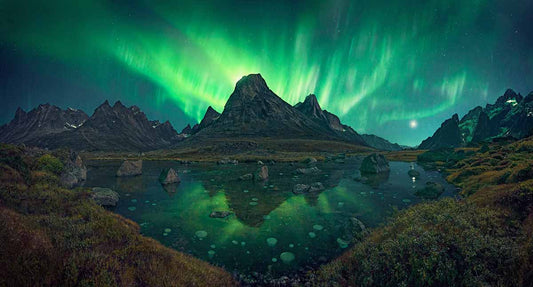
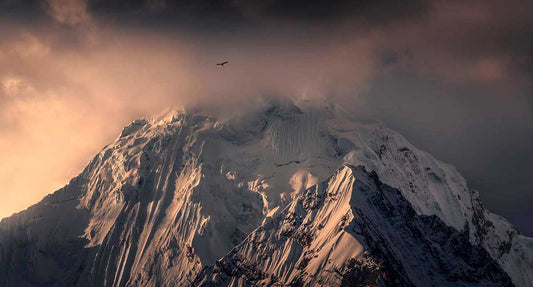
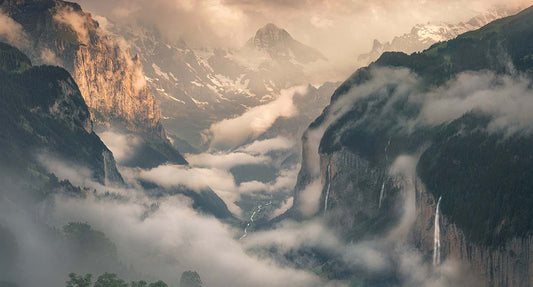
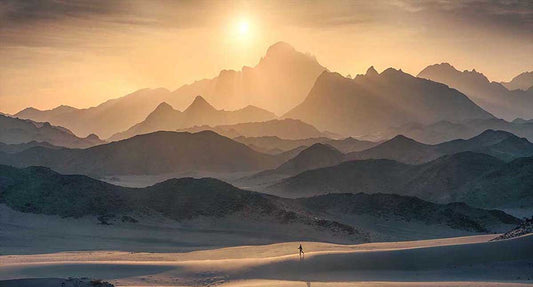
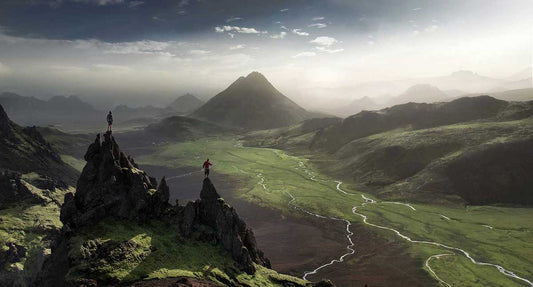
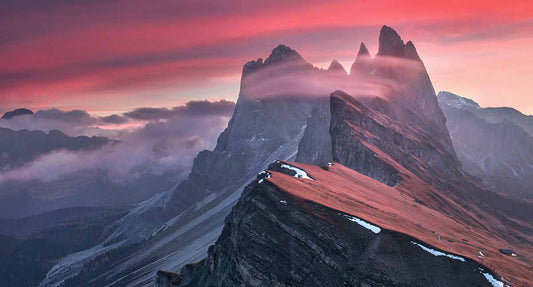









No comments